Spaghetti pans: varieties and features of choice
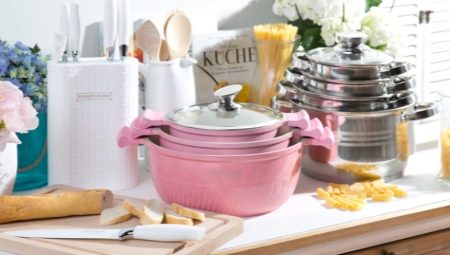
The spaghetti pot is a very easy-to-use kitchen utensil, there is nothing technically creative in it. Typically, it has three main components: a large brewing container, a lid and a plug-in colander with small holes to drain the water. The insert is smaller in size and all of the parts can be perfectly adapted to different culinary maneuvers, using both together and separately.
The cooking process is as easy as shelling pears: assemble the pan (insert the inside into the main pan), pour in water, salt as desired and add any kind of spaghetti or pasta. When they are ready, you just need to remove the colander from the main part, and the water will drain through the holes. And you can serve it!
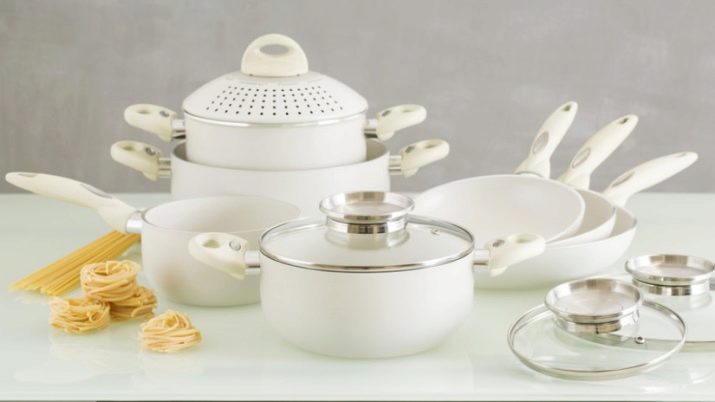
Material
Typically, either stainless steel or aluminum is used to make pasta pots. It is easy to care for the stainless steel, in addition, during the cooking process, you can use any spatulas or spoons without fear of ruining the bottom.
The material heats up evenly in such utensils, so the risk of burns is minimal.
The dishes are lightweight, easy to use, and there is no need to run to drain the water - everything is compact and "2 in 1".
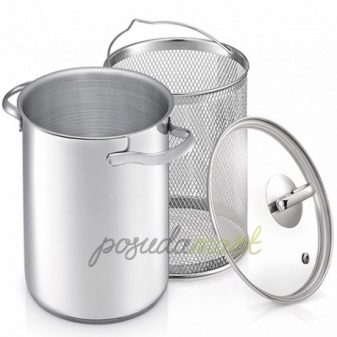
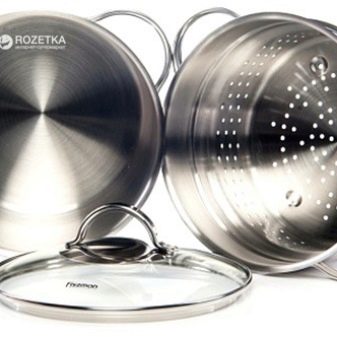
Aluminum, on the other hand, attracts with its cheapness and lightness. If the aluminum is cast, then the dishes will be much heavier in weight. Rumors of harm have little evidence, and if used correctly, the material is completely safe. The only important point is to immediately get rid of the utensils on which the chip has appeared: the impact site becomes a breeding ground for bacteria and is poorly washed out. And in general, chipped dishes have a careless look.
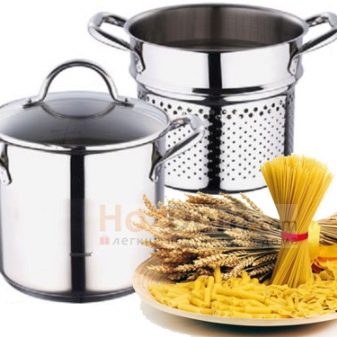
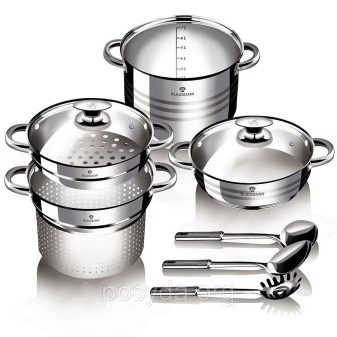
Cover features
When the pasta is cooked, it is enough just to tilt the pan, holding the handles, and the excess water will simply drain through the holes in the lid. Nothing will fall out of the colander itself. Then you can only put the pan aside for a few minutes, and the remaining liquid will drain to the main bottom. After that, all that remains is to enjoy the pasta.
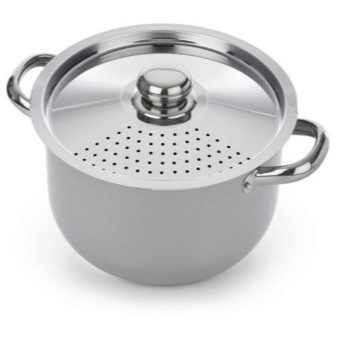
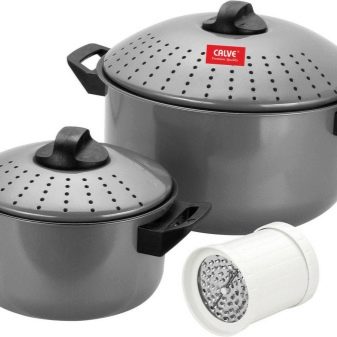
Varieties
It is very important to note that pasta pans come in different shapes and sizes. The bottom of the product is small, of a narrow cylindrical shape, in order to evenly boil the products without letting them stick together. The dishes are high, there is a colander inside, the lid covers both cylinders. Pans can have different innovative inserts. For example, two inserts at once, like that of the ZEIDAN company.
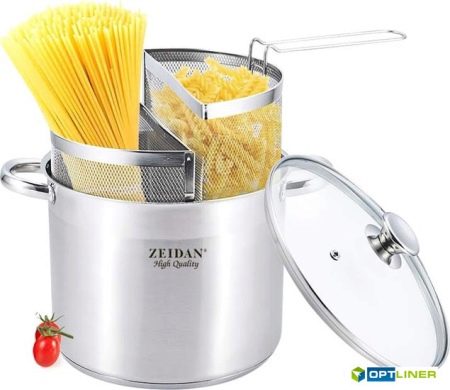
Or with a steamer insert like GIPFEL.
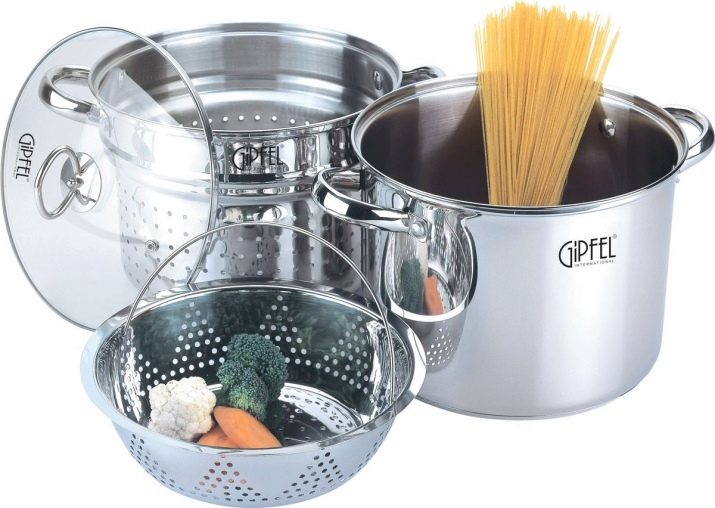
The handles of all variants are protected from overheating, and all dishes are made of high-strength materials for long-term use.
Professional chef options
For chefs and hobbyists, stores offer different sets with notches and nets. The grid is intended not only for boiling, processing vegetables, but also for cooking small pasta.
Perforation eliminates the need to constantly run up and check whether, for example, water has boiled, and constantly open or move the lid - you can drain directly from the holes.
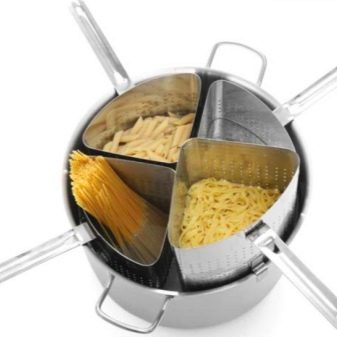
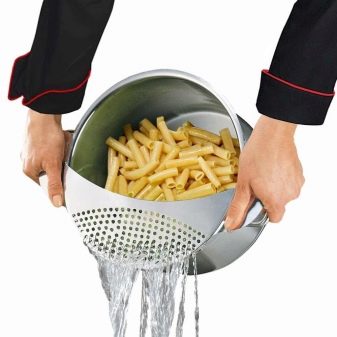
Additional elements
It doesn't always make sense to buy another pan when you just need some additional part or insert. The market for utensils is huge, and you just need to pay attention to the additional inserts for pots, only indicating the height and diameter of the items you have.
Separate colander
There are a huge variety of colanders for all types of spaghetti and pasta, the diameter of the holes available varies from millimeter to 1–2 cm. There are even funny combination models - a colander + a bowl for food.
In such a "gadget" you can perfectly wash fruits and vegetables and enjoy pasta without difficulty.
Even if you can't find a colander of the diameter of your pan, you can simply choose the option with a leg to make it easier to transfer the finished spaghetti to the dish.
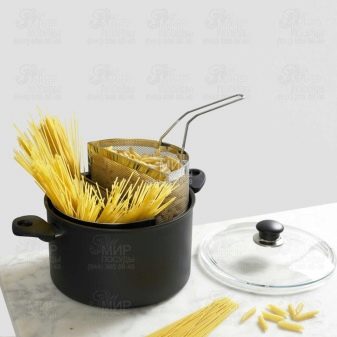
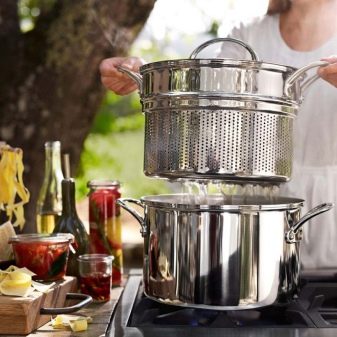
Spaghetti dispenser
The producers of this miracle are distinguished by an enviable sense of humor. Plastic mold with holes in the form of a child, a man, a woman and ... a horse? Exactly! A hint of immense hunger. The mold allows you to accurately measure the amount of spaghetti to cook.
There are more modest options: with simple holes and an indication of the number of persons.
The main "feature" of the design is precisely the integrated insert, which sweeps aside the usual practice of draining pasta as a separate manipulation. Anything that is boiled in liquid can be cooked in such a saucepan.
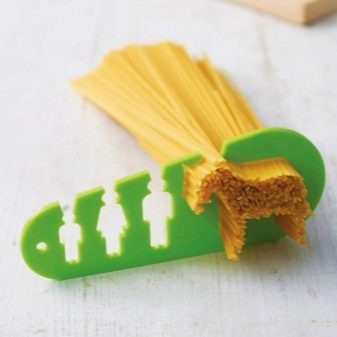
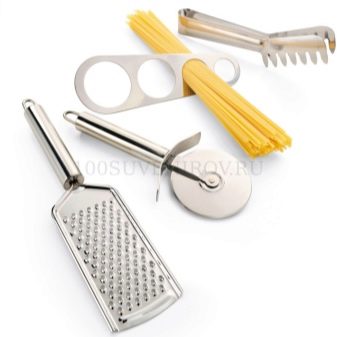
Application Tips
The characteristics of the spaghetti and pasta pots make them quite versatile and allow them to be used in a wide variety of foods every day.
There are several recommendations worth considering:
- such dishes do not differ in some kind of supernatural - you can wash them both in the sink by hand and in the dishwasher;
- avoid using carbon steel pots on induction hobs;
- it is not necessary to use a lot of oil when frying.
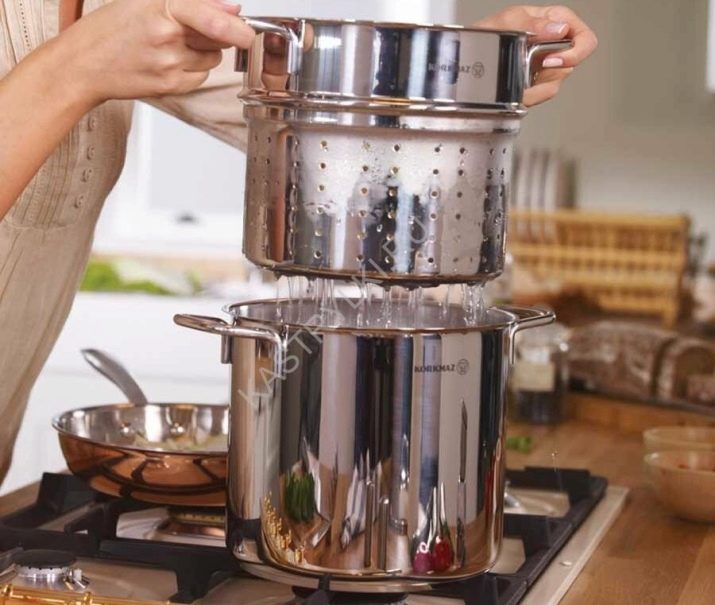
Advantages of Spaghetti Cookware:
- non-stick coating;
- protection on handles;
- heat-resistant saucepan;
- price range: you can choose both an economy and an expensive option;
- quality is guaranteed if used correctly, and it does not depend on the price;
- convenience: easy to wash, does not burn, heats up quickly;
- you can cook for a large number of people at once.
Buying a convenient spaghetti pot is not just a whim, but a significant saving of the hostess's time and nerves. You just need to take into account some points in order to make the right choice: is the chosen cookware suitable for the size of your stove and burners, is the material of the cookware safe and is the manufacturer verified.Taking into account all these little things, you will get an excellent saucepan that will serve you for many years.
An overview of the pasta pot in the video below.








